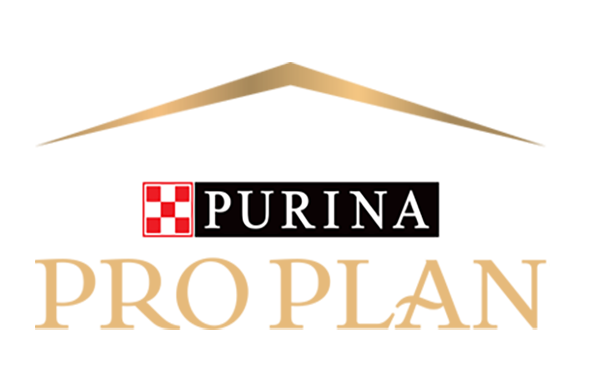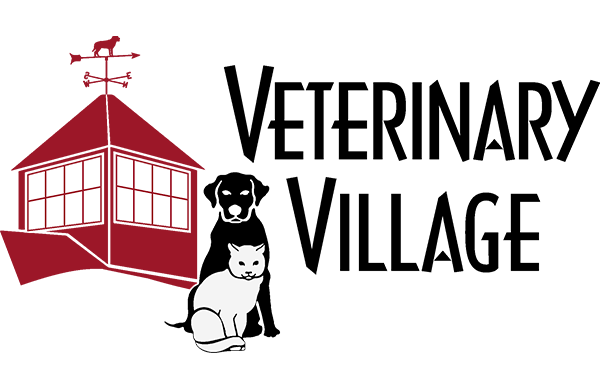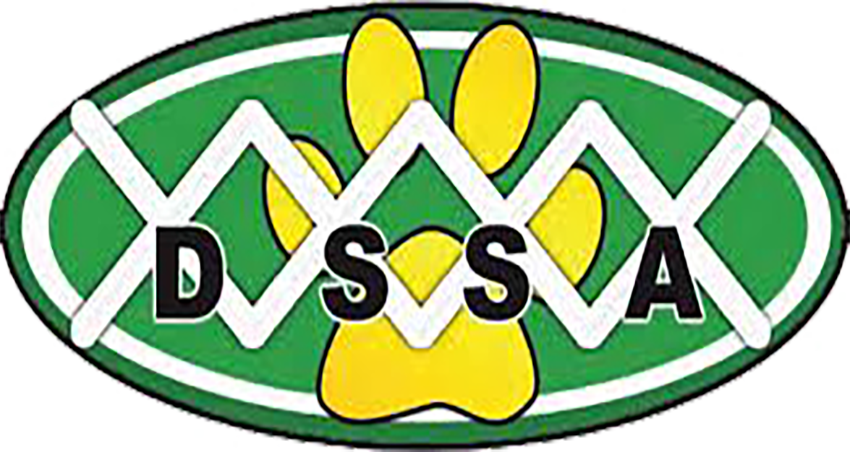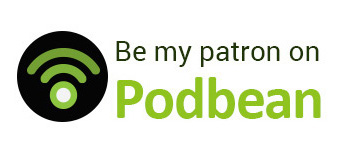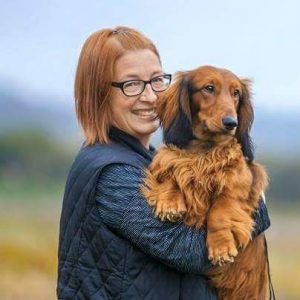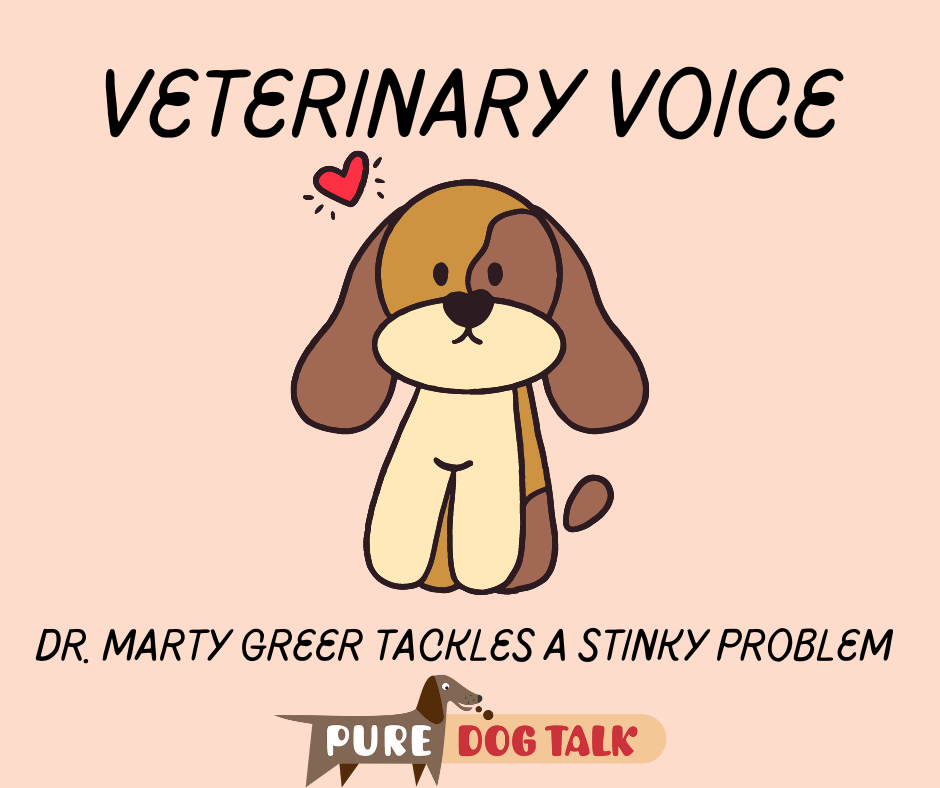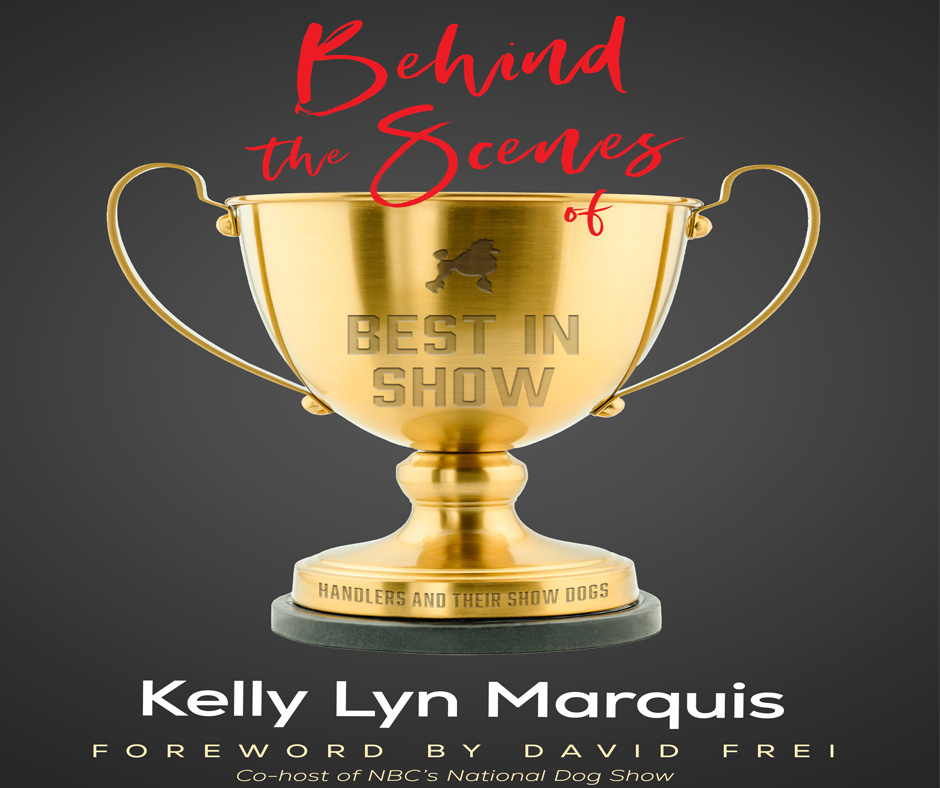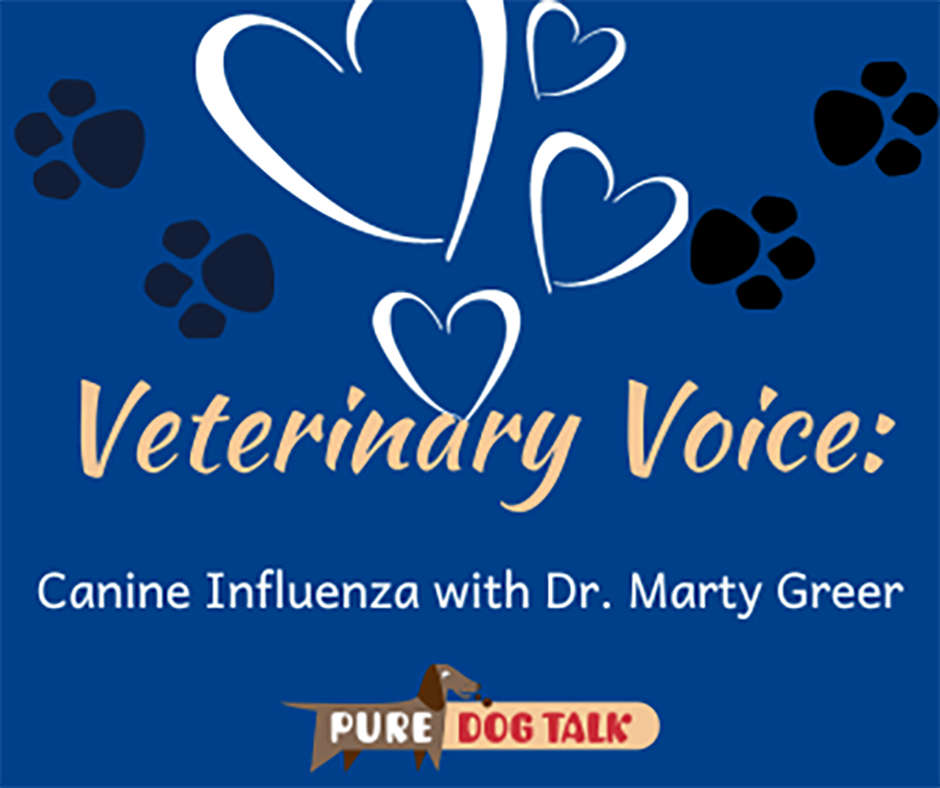371 – Pugs: Mischievous and Charming Companions CAN Work
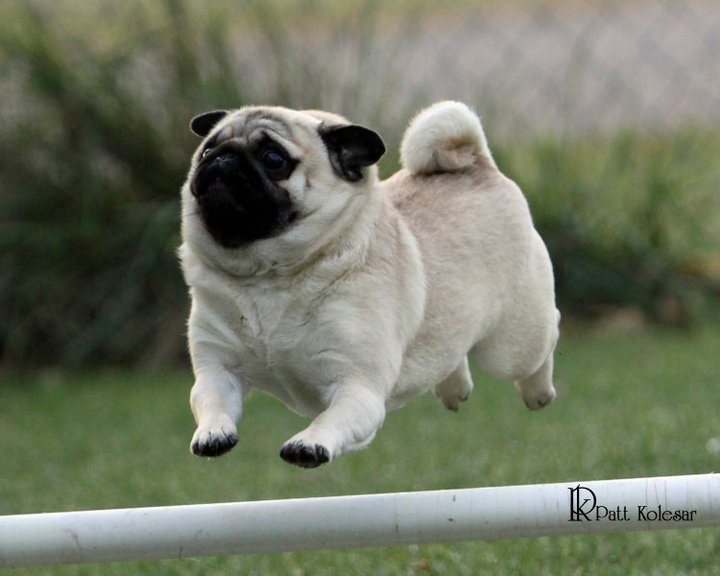
Pugs: Mischievous and Charming Companions CAN Work
Three long-time breeders join host Laura Reeves to talk about all things Pugs. Kim Langlands, Brenda Belmonte and Patti Kolesar Stoltz share the joy of Pug dogs, their companionship, their functionality, their snoring and their health.
Ancient history
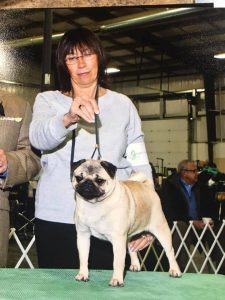
Patti Kolesar Stoltz
“The exact origin of our breed is actually lost in antiquity,” Kolesar Stoltz said. “What we do know is that the Pug is of Chinese origin … he was known in the Orient as early as 700 BC … the breed was developed as one of three short faced dogs bred in China for the Imperial court … it’s believed that the Pug found his way to the western world via Dutch merchant traders … because when people from the Western world, at that time, would go to China and conquer, they would bring back presents for their Royals. Pugs were one of the presents that they brought back and they became the favored of monarchs throughout Europe. There is no doubt that the Royal patronage helped to establish the popularity of the breed. In fact, Pug dogs were twice the most popular breed in Europe, in the late 1600s and during the Victorian era… the wonderful thing about Pugs being so popular in the Victorian era is we can visually follow our breed through history because it was very often the favorite subject depicted in many forms of art — early paintings, sculptures, porcelains, so we can follow his history … the breed has a wonderful temperament. They make ideal companions. We were admitted to the American Kennel Club in 1885. We are the largest of the toy breeds and we are one of the most mischievous, also the most fun. And we still remain dignified loving and trusting of everybody.”
Myth busting
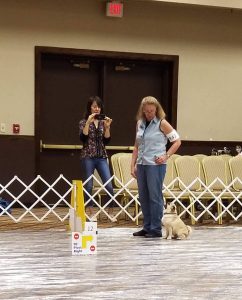
Brenda Belmonte
It’s a pervasive myth that these flat nose breeds can’t breathe normally, Belmonte noted, therefore they can’t do normal things.
“It’s unfair to our breed to just assume that because it’s a Pug it’s unhealthy,” Belmonte added, noting her work with the breed in nosework, agility and obedience. “I think the general public needs to hear that and they need to see what our pugs can do so that we can combat this belief that, ‘Oh my gosh our pugs are unhealthy,’ that’s very, very far from the fact. As a
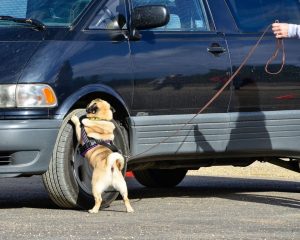
Belmonte’s pug competing in nosework.
breeder and somebody who’s been in the breed a long time, I truly believe that good breeders have the best interest of their dog’s health at heart. So yes, it’s about being a good, responsible breeder and it’s about knowing that these dogs can breathe normally and they can do the things other dogs can do.”
Healthy habits
Langlands observed that, although the breed has evolved as time has gone on, the brachycephalic dogs were never intended to run marathons.
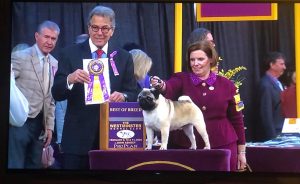
Kim Langlands
“This is a breed (that is) more than capable of doing agility and other performance events and going out and being good little happy pets and going for walks,” Langlands said. “They’re as healthy as people want them to be and take care of them to be. If you take good care of your dog, you’re going to have a happy healthy pet … and that includes taking care of their teeth, their nose roll, their weight. I mean the weight is a huge issue.”
Color questions
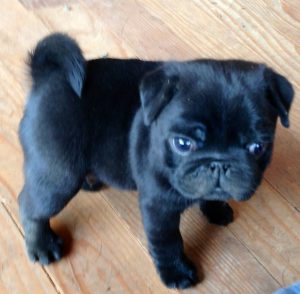
Pugs are black or fawn.
Kolesar Stoltz, who heads up education for the Pug Dog Club of America, reminds our audience that pugs come in fawn or black. Period.
“Fawn has various shades of real light blonde to what we call an apricot fawn, which has got a very, very pale, pale orange tinge to it… the fawn dogs also have black guard hairs … the fawn dogs all have black masks and black hairs and usually black in their head wrinkle. The black dogs are black … black can be various shades of black depending on if your dog’s been out in the sun and his coat is sunburned, so he might get a little reddish tinge to it or undercoat … grey undercoat …. but pugs are not albino. They’re not spotted. They’re not black and tan. They’re not brindle and they’re not blue. Pugs come black or fawn. Any other color is a disqualification in our breed and somewhere back in their pedigree is something that shouldn’t be there.”
Our Valued Corporate Sponsors:
Our Esteemed Advertisers:
Our In-Kind Supporters:
KNOWLEDGE IS POWER — FRANCIS BACON
When you become a patron of Pure Dog Talk you’ll tap into an exclusive community of experts to help you and your dog be blue-ribbon best at whatever you do with your purebred dog! Your support helps keep the MP3's rolling at Pure Dog Talk!
As a supporter, you’ll immediately gain access to the weekly Pure Pep Talk SMS, Pure Pep Talk private Facebook group, and priority emails. Patrons can choose to level up to the After Dark Zoom and a Patrons Digital Badge for their website— even a private counseling session with Laura on any topic.

DON'T MISS AN EPISODE!!


